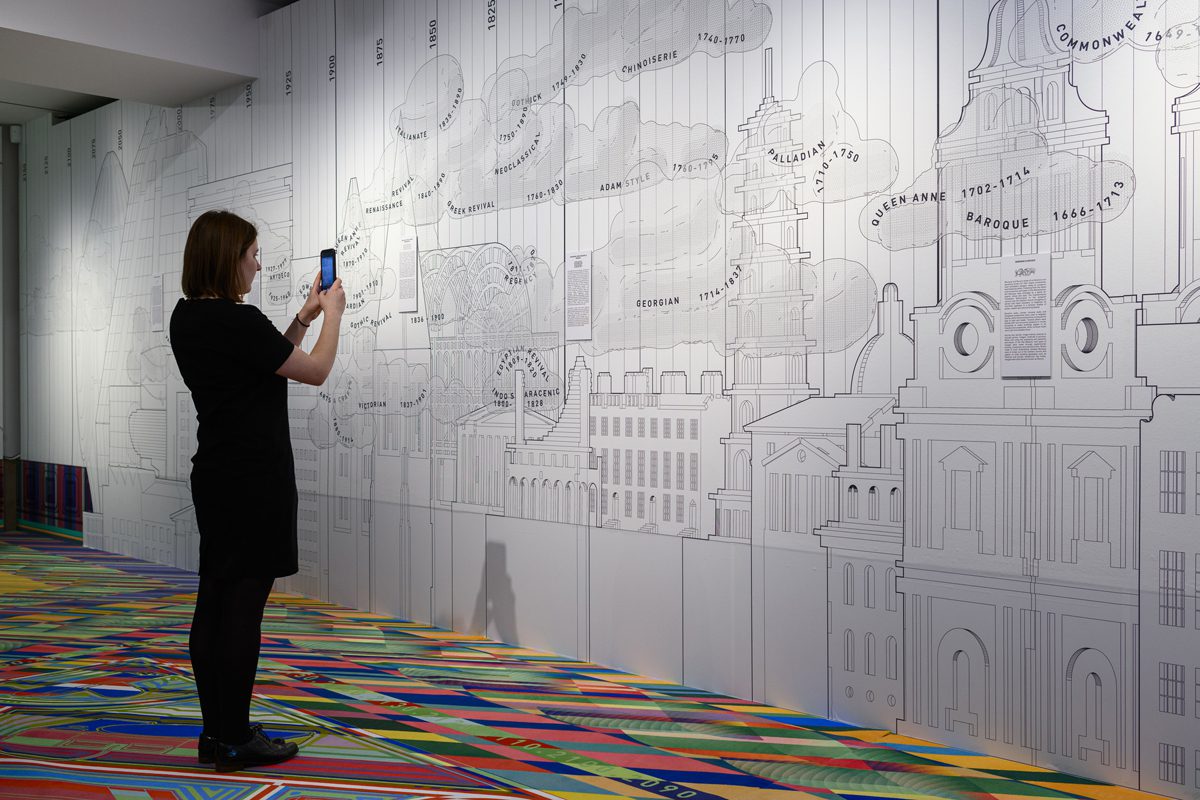‘Freestyle: Architectural Adventures in Mass Media’ explores the reciprocal relationship between design and communications technologies
‘Freestyle; Architectural Adventures in Mass Media’
Architecture Gallery, RIBA, London W1B
Until 16 May 2020
It is apt that an exhibition investigating the historic impact of media and communications technologies on architecture should be the first RIBA show presented – in part – through the medium of virtual reality (VR). Curated by Shumi Bose and designed by multidisciplinary design practice Space Popular, ‘Freestyle – Architectural Adventures in Mass Media’ is the second in a planned series of installations based on Sebastiano Serlio’s ‘Seven Books of Architecture’ and looks particularly at the question of style.
Fredrik Hellberg and Lara Lesmes of Space Popular
The hypothesis of the show is that developments in mass media and changes in architectural style are inextricably linked. To ‘prove’ it, the designers lead visitors around the room by means of a ‘timeline’ subtly incorporated within the dense imagery of a digitally-printed day-glo carpet. Next to typical patterns from the Tudor or Gothic Revival periods are images of contemporary builders’ tools along with communication technologies, from the Guttenberg press to the iPhone. Along the walls are pieces of physical evidence – original drawings and photos from the RIBA collection – while the centre of the room is dominated by a large-scale grey mdf model which agglomerates abstractions of British buildings over the ages.
Four VR headsets pinned to adjacent columns bring this structure to life in a remarkable way. The buildings are illuminated by turn, and populated by animated characters. As a voice-over explains the evolution of style, the animations spill out onto the floor and surrounding surfaces, and drawings seem to be suspended in the air of the room.
It is a powerful demonstration of the designers’ contention that with digital technology, a fundamental shift has occurred: media no longer just represents architectural environments, but can contain them entirely. With the emergence of virtual reality, notes Space Popular co-founder Lara Lesmes, “media has become spatial, and therefore a subject of true architectural concern”.




















